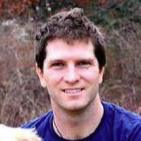Few coastlines, mostly garbage images
-
 by
PAGtoon
by
PAGtoon
I wonder if it would be possible to cut down on the amount of invalid (broken/overcast/landlocked) images. I've been getting almost all garbage images and an extremely small amount of actual coastlines to search for kelp.
Posted
-
 by
mistyfriday
by
mistyfriday
This is just part of the early part of the work, once a certain number of people have appropriately marked these images as clouds or just clicked next it will clear them from the data set. Then there will be more kelp marking. There is a blog article dated 8/8/14 explaining why this is necessary. If not, they could have lost some of the coastal images. There are also key bindings, c for clouds, and n for next which quicken things. If it is too annoying, perhaps it isn't the project for you. But you should really read through the blog info and other instructional info and try it first, then decide. 😃
Posted
-
 by
jebyrnes
scientist
by
jebyrnes
scientist
Indeed, they get filtered out in a few days. See our post on this at http://blog.floatingforests.org/2014/08/08/the-image-policing-power-of-the-crowd-or-let-them-see-kelp/ - we just dumped a TON of new images, so it will be a few days until the dust settles and the bad images are filtered. Just hit "n" to get the next image - you can scroll through quite a few quickly that way!
Posted
-
 by
Artman40
by
Artman40
Would it be better to overlap the images with nautical maps? So that means that the image would get rejected if it doesn't overlap with the area that contains an ocean with a depth of 0-80 meters? This also helps to include open ocean kelp forests.
Posted
-
 by
sara_ramona
by
sara_ramona
Just curious about when images disappear from the data set. Let's say I get an image of nothing but desert and just hit "next". I'm assuming that the image would also be peer reviewed as if it had been a coast line where I haven't spotted any kelp. Would it speed things up to perhaps add a few more buttons besides "cloud", like maybe "land" or "blacked out" or "glitch" or something? Happy to do the project though, just thinking of how we can optimize our hours.
Posted
-
 by
Artman40
by
Artman40
Land option is enough as some glitch pictures I've encountered still contain kelp AKP0009unp. But lining up satellite pictures with nautical maps would be a better idea.
Posted
-
 by
meermaid
by
meermaid
I literally had no kelp pictures since I started doing this. I only found glitches, land, and clouds.
Posted
-
 by
HMB6EQUJ5
by
HMB6EQUJ5
Far too many glitch/clouds/complete land images lately
Posted
-
 by
Blondie7
by
Blondie7
Just land and glitches. They should only take photos of places where kelp actually grows.
Posted
-
 by
DZM
admin
by
DZM
admin
I'm going to see if I can draw some scientists' attention to this thread and see if we can get some of your concerns resolved. Thank you!
Posted
-
 by
mistyfriday
by
mistyfriday
This phenomenon seemes to cycle. As a new dataset is entered it has a lot of what is being considered garbage in it. Once it is adequately marked by several people they are dropped. Then the ones with the kelp need to be processed. As I remarked above, read the blog entry from 8/8/14, the reason for this is explained. Perhaps if this is too annoying to you, you should search for another project.
Posted
-
 by
DZM
admin
by
DZM
admin
Here's a link to the post that @mistyfriday referenced:
Posted
-
 by
tombell
scientist, translator
by
tombell
scientist, translator
Hi All,
Sorry to be late to the conversation. So as you probably know, we are only using Landsat scenes where we have observed kelp. However, these scenes are rather large, and each one is cut up into tiny squares, most of which are going to be open ocean or land. After a few passes through with no users observing kelp, the small image is tossed from the library so that areas with kelp are viewed more often. We just went live with a lot of new images, so this process has to start again. The good news is that the more images that we search through, the more exciting it will become.
Posted
-
 by
mistyfriday
by
mistyfriday
So, what they are saying, every time a new group of images are dumped in, there is an increase in what some people consider to be the "garbage images". That is a part of the project. Once the correct number of people tag them correctly, they are gone, out of the dataset. If you were working on Snapshot Serengeti you would be getting image after image of just grasses, no animals. The moving grasses trip the cameras. It seemed as if 1/2 of the images were grasses! It is just the way it is. Reading the 8/8/14 blog here helped me to get a handle on it. Although I was unable to understand the technical side of it I got the gist for the need for the way that it is being done. And hey, why argue with a scientist?
Posted
-
 by
DZM
admin
by
DZM
admin
Thank you very much for the detailed explanation, @tombell !!
Posted
-
 by
MiaG
by
MiaG
Suggestion then - in addition to marking cloud, how about being able to mark it as land.
Posted